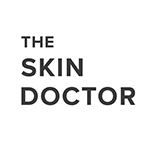What is Pigmentation?
Skin colour is determined by a pigment (melanin) made by specialized cells in the skin (melanocytes). The amount and type of melanin determines a person’s skin colour. Pigmentation disorders affect the colour of your skin. There are many causes and types of pigmentation of the skin which can be caused by hormones, sun damage, trauma and genetics. When a person is healthy, their skin colour will appear normal with equal tone throughout. In the case of illness or injury, the person’s skin may change colour, becoming darker (hyperpigmentation) or lighter (hypopigmentation).

Common types:
– Benign legions (mole): Skin lesions that are benign are noncancerous and often harmless. These lesions are abnormal growths on your skin. Most benign lesions don’t need treatment unless they’re bothering you or you don’t like how they look
– Post Inflammatory Hyper Pigmentation (PIH): This is a result of previous injury or inflammation to the skin.
– Melasma is believed to be caused by hormonal changes and may develop during pregnancy or be a result of genetic predisposition.
– Sunspots are common they are also called solar lentigines and appear as brown flat discolouration on the skin.
Treatments:
– Sun Smart: The importance of sun protection in combating pigmentation cannot be stressed enough. If you don’t do anything else, you must do this! It will help lessen the UV damage that leads to more activation/inflammation of melanocytes and reduce or at least halt pigmentation. Most in clinic treatments; such as lasers or peels for pigmentation or other skin concerns cannot be performed if you are not consistent with sun protection, as sun exposure is a contraindication to many of these treatments due to the melanocytes being more active after these procedures.
– Appropriate at home skincare and in clinic peels
– Appropriate types of laser can be beneficial
– Depending on the type of pigmentation, prescription medications may be appropriate
